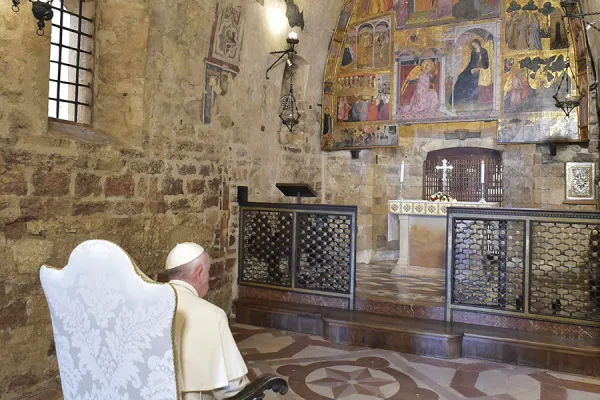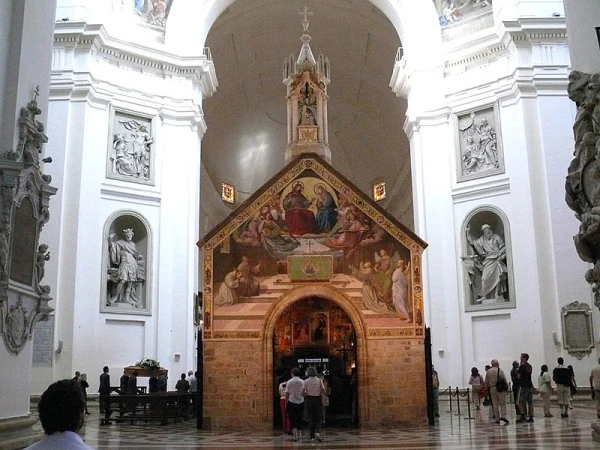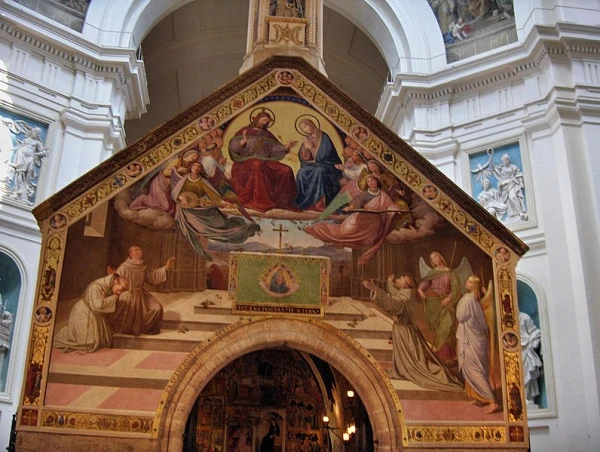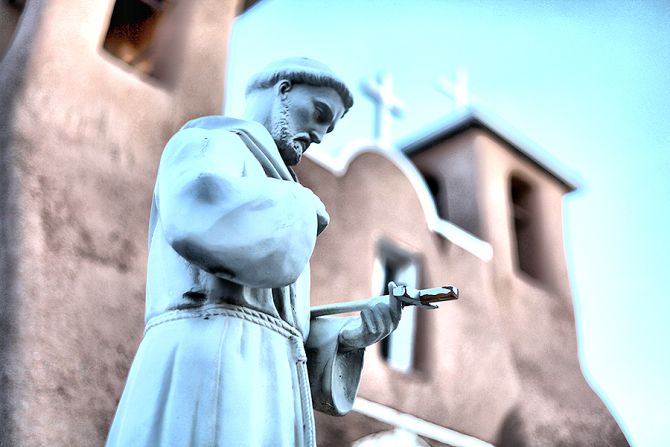Denver, Colorado, Jul 28, 2023 / 07:00 am
The feast of Our Lady of the Angels of Portiuncula and its associated indulgence is a way to focus on the importance of Mary and the Franciscan tradition in the Church, according to one friar.
The Aug. 2 feast is found in the Franciscan tradition and marks the dedication of the parish church in Assisi, Italy, called Portiuncula, or “little portion,” which is one of those that St. Francis rebuilt in obedience to Christ’s command to “rebuild my church.”
“The Portiuncula is at the heart of the Franciscan journey,” Father David Convertino, the executive director of the Franciscan Missionary Union in New York City, told CNA.
“For Francis, it was his most beloved place. He lived near it with the early followers … and he loved the Portiuncula, as it was part of his devotion to Our Lady.”

In 1216, at St. Francis’ request, Pope Honorius III granted a plenary indulgence to those who visit the chapel. Later popes expanded the indulgence to include any basilica, cathedral, or parish church.
An indulgence is the remission of the temporal punishment due to sins that have already been forgiven, and it can be plenary or partial.
A plenary indulgence requires that the individual be in the state of grace by the completion of the acts and have complete detachment from sin. The person must also sacramentally confess his or her sins and receive Communion up to about 20 days before or after the indulgenced act.
Anyone who visits a Catholic church with the intention of honoring Our Lady of the Angels and recites the Creed, the Our Father, and prays for the pope’s intentions may receive a plenary indulgence on Aug. 2.
“Any kind of a prayer form that helps people come closer to God is obviously a good prayer form, and certainly an indulgence is one way,” Convertino said.
“It helps us focus on, in this case, the meaning of the Portiuncula and the Franciscan tradition, how it’s situated in the greater idea of the Church.”
The Portiuncula was built in honor of Our Lady of the Angels in the fourth century, and by St. Francis’ time it had fallen into disrepair. The church, which was then located just outside of Assisi, became the “motherhouse” of the Franciscan orders.
“Although Francis realized that the kingdom of heaven is found in every dwelling on earth … he had learned nevertheless that the church of St. Mary at Portiuncula was filled with more abundant grace and visited more frequently by heavenly spirits,” says the “Life of St. Francis” written by Friar Thomas of Celano and read today by Franciscans.
“Consequently, he used to say to his friars: ‘See to it, my sons, that you never leave this place. If you are driven out by one door return by the other for this is truly a holy place and God’s dwelling.’”
Convertino added that the Portiuncula “was the place he chose to lie next to on his deathbed, and at that time of course you could have looked up to the city of Assisi, which he also loved so well.”
The Portiuncula, a rather small chapel, is now located inside a large basilica that was built around it to enclose and protect it.
(Story continues below)

“You have this large basilica built over this teeny tiny little chapel,” Convertino reflected. “If that chapel wasn’t there then the basilica wouldn’t be there, but if the basilica wasn’t there, the chapel probably wouldn’t be there either, given 800 years of war, weather, and turmoil.”
For Convertino, the duality of the big church and the little church is a reflection of the relationship between the worldwide Catholic Church and the smaller communities that constitute it.
“We feel the Franciscans kind of convey, ‘We’re the ones at the heart of the Church, the little church there.’”
He said that each time he visits Assisi, the “experience” of the Portiuncula is “compounded more and more” and added: “It’s such a magnificent place, and the friars there are wonderful.”
Convertino also discussed the fresco now painted around the entrance of the Portiuncula, which shows St. Francis together with some of his followers receiving the indulgence from Christ and Our Lady.

“The idea behind the story is that Francis is asking Jesus for a Portiuncula indulgence, and Jesus is saying to Francis, ‘Well, you really better ask Mary, ask my mother.’”
The story was originally published on Aug. 1, 2022, and was updated July 27, 2023.






